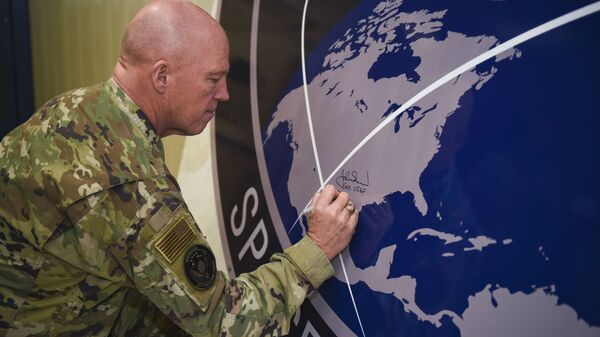The National Aeronautics and Space Administration (NASA) is looking into plans to deal with asteroids that pass as close as 20,000 miles to Earth, agency administrator Jim Bridenstine said.
"Apophis is going to come close to the Earth in 2029. It will be below some of our satellites in geosycnronous orbit (22,000 miles)", Bridenstine said during an online press conference on Tuesday.
According to him, the threat of Apophis or any other asteroid to come as close to Earth that a collision could be possible has been studied by NASA in cooperation with the US Space Force.
"We have a space force that is willing to work with us now [...] We have to make sure we are prepared for an asteroid impact which could be devastating. We have to work on how are we going to deal with an asteroid that would impact with the Earth," Bridenstine said.
US Space Force Commander Gen. Jay Raymond has expressed his enthusiasm to work with NASA to "keep the space domain safe for all".
The close partnership we enjoy today with @NASA is so important to our collective understanding of the space domain. Together we will work to keep the domain safe for all. https://t.co/wXCBYIhWqi
— Gen. Jay Raymond (@SpaceForceCSO) May 5, 2020
The goal of a Space Force/NASA partnership is stated to "develop cislunar situational awareness" with the help of the military branch to "monitor further out in space". Scientific data, including observations of Apophis, representative of about 2,000 currently known Potentially Hazardous Asteroids (PHAs), "could one day be used for planetary defence", according to Center for Near Earth Objects Studies (CNEOS) astronomer Davide Farnocchia.




